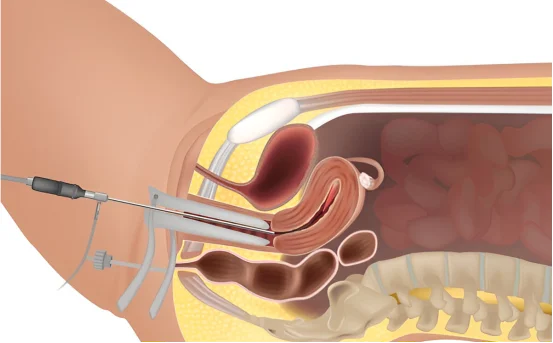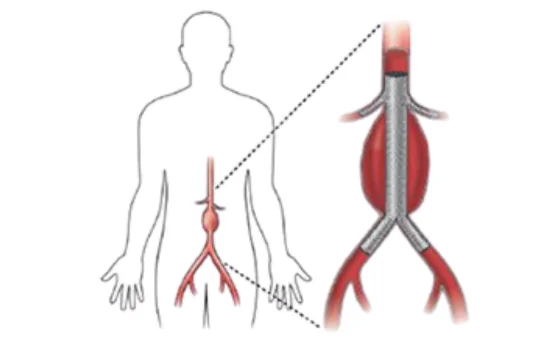The hysteroscopic procedure is a minimally-invasive gynecological treatment that allows doctors a look inside the uterus in order to diagnose and treat uterine disorders. This symptoms for hysteroscopic surgery is recommended when certain symptoms indicate uterine abnormalities. Early detection of these symptoms can improve women’s reproductive health, help them avoid complications and receive timely treatment.
What is Hysteroscopic surgery?
The hysteroscope is a thin, illuminated instrument that is inserted through the vaginal and cervix to the uterus. The doctor can view the uterine lining without having to make any incisions.
There are two main types:
- Diagnostic Hysteroscopy- used to diagnose problems.
- Operative Hysteroscopy is used to treat fibroids, polyps or adhesions.
Symptoms that may require hysteroscopic surgery
Women who present with certain symptoms suggestive of abnormalities in the uterus are usually recommended to undergo hysteroscopic surgery. These symptoms will be discussed in more detail.
1. Abnormal Uterine Bleeding (AUB)
The most common reason for hysteroscopic examination is abnormal bleeding. This includes:
- Heavy menstrual bleeding (menorrhagia)
- Regular periods
- Spotting between periods
- Bleeding after Menopause
These bleeding patterns may be indicative of polyps or fibroids or endometrial Hyperplasia. All of these conditions can be treated or diagnosed using hysteroscopic procedures.
2. Infertility or Recurrent Miscarriages
Your doctor may suspect intrauterine anomalies such as:
- Uterine septum
- Asherman Syndrome
- Fibroids or polyps
The hysteroscope can be used to both diagnose and surgically correct these anomalies to improve fertility outcomes.
3. Pelvic pain or Cramping
Chronic unexplained discomfort or cramping can be caused by a variety of conditions. However, when it is associated with menstruation, or sexual activity, this may indicate a problem within the uterine chamber. In such cases, a hysteroscopy can help detect:
- Retaining products of conception
- Polyps
- Endometrial Infections
4. Postmenopausal Bleeding
Bleeding is not normal after menopause and should be evaluated. This symptom may be an indication of:
- Endometrial atrophy
- Polyps
- Endometrial carcinoma
Diagnostic hysteroscopy is a useful tool to detect structural problems and eliminate malignancies.
5. Unusual Vaginal Discharge
A persistent, foul-smelling or watery discharge, which does not respond to medications, may be a sign of an infection or polyps or foreign material (such as IUDs). The hysteroscope provides a direct look at the uterus.
6. Retrieval or Insertion of IUDs Failed
A hysteroscopy is required when an intrauterine device cannot be inserted normally or removed. The symptoms that could lead to this include:
- Pain during insertion
- Missing IUD strings
- Abnormal bleeding post-insertion
Hysteroscopy is a visual aid that helps to safely remove or reposition the device.
What Causes These Symptoms?
Understanding the causes of these symptoms will help you determine if hysteroscopic surgical intervention is necessary
When should you see a doctor?
Consult a gynecologist if you experience any of these symptoms, particularly if they’re chronic, worsening or impacting your quality of living. Early diagnosis can help:
- Avoid complications
- Enhance reproductive health
- Malignancies are ruled out
- Reduce the need for more invasive surgery
Diagnostic Process Before Hysteroscopy
Your doctor may order several tests before hysteroscopic surgery.
- Ultrasound (Transvaginal, 3D or Transvaginal)
- Hysterosonography (saline infusion)
- Pelvic exam
- Endometrial biopsy
Hysteroscopy should be performed if these findings suggest intrauterine disease.
Benefits of Hysteroscopic surgery
- Minimum Invasive
- No external incisions
- Recovery time is short
- Postoperative pain is reduced
- Diagnose quickly and get immediate treatment
You can usually return home on the same day if you have an outpatient procedure.
Conclusion
Early intervention and effective treatment are dependent on recognizing symptoms that require hysteroscopic surgical. Hysteroscopy is a safe, effective way to diagnose and treat symptoms such as abnormal bleeding, infertility or postmenopausal syndrome.
Consult a gynecologist if you experience any of the above symptoms. Ask if hysteroscopic surgical treatment is appropriate for your situation. Early action can make a big difference in your reproductive health.























